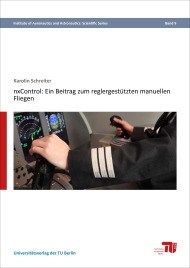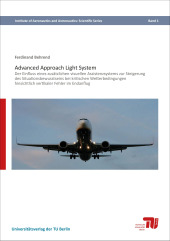nxControl: Ein Beitrag zum reglergestützten manuellen Fliegen

Format: 17,0 x 24,0 cm
Publishing year: 2020
This dissertation describes the development of the command controller nxControl for the longitudinal load factor nx for the effective support of manual flying. The load factor nx is equivalent to the total energy angle and thus to the specific temporal change of the total energy of the aircraft. The load factor is directly proportional to the difference between thrust and drag and can be controlled by engine thrust, airbrakes and wheel brakes. The command controller replaces the conventional manual control of these effectors. Up to now, command controllers have only been used to support the manual control of the flight attitude with the aerodynamic control surfaces. The nx command controller completes the electronic flight control functions in the cockpit. Together with an adapted human-machine interface, it enables direct command and precise adjustment of the physical aircraft response without the pilots having to consider the effect of the effectors. This allows pilots to fly more precisely and at the same time with less manual effort.
The development is divided into three phases: analysis, design and evaluation of the control system. Since the system provides support for human operators, airline pilots are involved in all development steps as potential users. The analysis focuses on the flight mechanical and operational aspects as well as on the human aspects of the manual energy management. Based on the determined action models of the pilots as well as the flight dynamic relationships, requirements for the control system will be established and incorporated into the design. In extensive flight simulator studies with commercial pilots, the influence of the nx command controller on flight precision, workload, situation awareness, handling, acceptance and safety is investigated in various representative scenarios.
The results show that the developed control system provides pilots with intuitive support for manual flying, which enables them to fly demanding trajectories more precisely and with less workload than conventional. It can be used in all flight phases and supports the pilots even in critical cases such as engine failures.
Due to the increased precision at complex trajectories in manual flight, it is possible to optimize and narrow separation procedures and flight route planning. This allows more efficient use of airspace and increases capacity. At the same time, it is possible to fly manually more frequently in daily operations, as the workload is lower. In the event of a switch back to conventional control, the more frequent training and similar procedures mean that the basic flight skills can still be called up.This increases safety in future air traffic.



